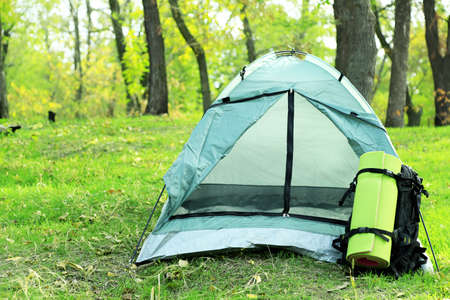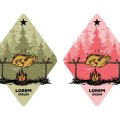1. Understanding Local Wildlife Hazards
When youre beach camping in the U.S., its not just about sun and sand—its also about staying safe around local wildlife. Coastal areas are home to a variety of animals, some of which might be curious or even pose risks if you’re not prepared.
Common Coastal Wildlife You Might Encounter
| Animal | Where Youll Find Them | Potential Risks |
|---|---|---|
| Raccoons | Wooded areas near the beach, campsites | Raid food supplies, spread disease through droppings or bites |
| Snakes (including venomous types) | Tall grasses, dunes, under driftwood | Bites if stepped on or startled |
| Shorebirds (like seagulls) | Open beach areas, picnic spots | Steal food, become aggressive when fed by humans |
How to Store Food and Trash Properly
The best way to avoid unwanted animal encounters is to keep your campsite clean and your food secure. Here are some simple tips:
Food Storage Tips
- Use animal-proof containers or coolers with tight-fitting lids.
- Store all food in your vehicle overnight if possible.
- Avoid leaving snacks or garbage unattended, even for a short time.
Trash Disposal Tips
- Bring heavy-duty trash bags and seal them tightly.
- If there are no trash bins nearby, pack out all garbage with you.
- Never bury food scraps—they can attract animals and pollute the area.
Pro Tip:
If raccoons are common in your camping area, consider hanging your food and trash from a tree branch using rope—at least 10 feet off the ground and 4 feet away from the trunk.
By being aware of local wildlife and taking a few extra precautions, you can enjoy a peaceful beach camping experience without any unexpected visitors at night.
2. Dealing with Insects and Marine Life
When youre beach camping, youre not just sharing the shoreline with friends and family—you’re also entering the natural habitat of a variety of insects and marine life. Knowing what to expect can help you stay safe and comfortable during your trip.
Common Beach Pests and Creatures
Here are some of the most common bugs and marine animals you might encounter while beach camping in the U.S., along with tips on how to avoid or protect yourself from them:
| Creature | When They’re Most Active | Where You’ll Find Them | How to Protect Yourself |
|---|---|---|---|
| Mosquitoes | Dusk and dawn, especially in warmer months | Near dunes, marshy areas, or standing water | Use insect repellent with DEET or picaridin; wear long sleeves and pants at night |
| Sand Fleas (No-see-ums) | Early morning and evening | In damp sand, especially near seaweed or debris | Avoid sitting directly on the sand; use bug spray; lay towels or mats down first |
| Jellyfish | Depends on tides and season—check local reports | In shallow waters near shorelines or floating in the surf | Avoid swimming during jellyfish blooms; wear water shoes; know first aid for stings |
| Stingrays | Mainly summer months in warm waters | Bury themselves in shallow sandy areas near shore | Do the “stingray shuffle” when walking in water to avoid stepping on one |
| Sea Urchins & Crabs | Daytime, often hidden under rocks or seaweed | Tide pools, rocky shores, underwater areas near reefs | Watch where you step; wear protective footwear when exploring tide pools |
Smart Habits for Staying Safe
Check Local Conditions Before You Go
Local ranger stations, beach websites, or park visitor centers often post updates about jellyfish warnings, mosquito activity, or other environmental alerts. Take a moment to check these before heading out.
Pack Your Bug Defense Kit
- Bug spray: Choose one that works well against mosquitoes and sand fleas.
- Citronella candles: These can help keep bugs away around your campsite.
- Mosquito netting: Great for tent openings or hammocks.
- Aloe vera or anti-itch cream: Useful if you get bitten despite precautions.
Marine Life Awareness Tips
- Avoid touching unfamiliar sea creatures: Even small ones can sting or pinch.
- If stung by a jellyfish: Rinse with vinegar (not fresh water), remove tentacles carefully, and seek medical help if needed.
- If stung by a stingray: Immerse the wound in hot water immediately and get medical attention.
- Keep a safe distance from wildlife: Respect their space to avoid defensive behavior.
A little preparation goes a long way when it comes to dealing with insects and marine life at the beach. By knowing what creatures are common in the area and how to protect yourself, youll be able to enjoy your beach camping adventure without any itchy—or painful—surprises.

3. Tide Awareness and Coastal Conditions
When beach camping, understanding tides is one of the most important parts of staying safe. Tides can change quickly and dramatically, especially along the U.S. coastlines. If you set up camp too close to the waterline during low tide, you might wake up in the middle of a rising tide—or worse, find your gear washed away.
How Tides Affect Your Campsite
Tide levels shift throughout the day due to the gravitational pull of the moon and sun. These shifts can cause water levels to rise and fall by several feet, depending on your location. In some areas like the Pacific Northwest or the Gulf Coast, extreme tidal swings are common. Always make sure to pitch your tent well above the high tide line.
Signs Youre Too Close to the Water
- Wet sand or seaweed lines indicate previous high tides
- Strong ocean smells and soft, sinking sand underfoot
- Nearby driftwood or debris pushed up by waves
Reading Tide Charts
Tide charts help you predict when high and low tides will occur in your area. These charts are available online, through camping apps, or at local ranger stations. Heres a simple breakdown:
| Tide Term | Description |
|---|---|
| High Tide | The highest water level during a tidal cycle; avoid setting camp below this point. |
| Low Tide | The lowest water level; use this time to explore tide pools or walk further out safely. |
| Tide Swing | The difference between high and low tide; larger swings mean more caution is needed. |
| Tide Time | The forecasted time when tides change; plan your setup around these times. |
Selecting a Safe Spot for Your Tent
Tips for Choosing Your Campsite:
- Look for dry sand above the highest debris line (this usually marks high tide)
- Avoid pitching near cliffs where waves can bounce back forcefully
- If unsure, ask locals or park rangers about safe camping zones
- Aim for higher ground that still gives you beach access but stays dry overnight
A little awareness goes a long way when it comes to tides. Taking time to learn about local conditions can make your beach camping trip both safe and enjoyable.
4. Weather Preparedness for Beach Conditions
When youre camping by the ocean, the weather can shift quickly. One moment its calm and sunny, and the next, strong winds or a surprise rainstorm can roll in. That’s why keeping an eye on local weather forecasts is a must before and during your beach trip.
Keep an Eye on Weather Changes
Use reliable weather apps like NOAA Weather Radar Live, AccuWeather, or The Weather Channel to monitor real-time updates. Coastal areas are especially prone to sudden changes in:
- Wind: Gusty winds can come out of nowhere and knock over tents or blow away gear.
- Temperature: Even warm days can turn chilly fast when the sun goes down or when a cold front moves in.
- Storms: Thunderstorms or coastal squalls can bring heavy rain and lightning — be prepared to take shelter quickly.
Tips for Staying Dry and Safe
If the forecast looks unpredictable, use these tips to keep your gear dry and your campsite safe:
| What to Do | Why It Matters |
|---|---|
| Use waterproof bags or containers | Keeps food, clothes, and electronics safe from sudden rain or sea spray. |
| Tarp under and over your tent | A ground tarp prevents water from soaking up into your tent floor; a rainfly or overhead tarp gives extra protection from above. |
| Stake down everything | High winds can pick up loose tents, chairs, or tarps — secure them with strong stakes and guy lines. |
| Create a windbreak | If possible, position your tent near dunes or natural barriers to block wind gusts. |
Packing Checklist for Unpredictable Weather
- Ponchos or rain jackets for everyone
- Bungee cords or extra rope for securing gear
- Duct tape for quick fixes on torn tents or tarps
- A portable weather radio in case of no cell service
The key is staying flexible. If you notice clouds rolling in or the wind picking up, it’s better to adjust early than wait too long. A little preparation goes a long way toward keeping your beach camping adventure safe and fun—even if Mother Nature throws you a curveball.
5. Emergency Plans and Staying Connected
When youre beach camping, being prepared for emergencies is just as important as packing your tent or food. Whether it’s a sudden storm, a wildlife encounter, or someone getting injured, knowing what to do can make all the difference.
Know What to Do in an Emergency
Even if youre just a few miles from town, beach environments can quickly become dangerous. Here are some common emergencies and how to handle them:
| Emergency | What to Do |
|---|---|
| Wildlife Encounter | Stay calm, don’t run. Slowly back away while keeping your eyes on the animal. Secure food and trash properly to avoid attracting animals. |
| Injury | Carry a first aid kit and know how to use it. For serious injuries, call 911 if possible or use emergency communication tools. |
| Severe Weather | Check forecasts before your trip. If storms hit, seek shelter away from trees and high tide zones. Have a waterproof tarp ready. |
Staying Connected When Cell Service is Limited
Not all beaches have strong cell signals. Here are some tools that help you stay in touch or call for help:
Emergency Communication Tools
| Tool | Description |
|---|---|
| Two-Way Radios (Walkie Talkies) | Useful for short-range communication between campers when theres no cell service. |
| Satellite Messengers (e.g., Garmin inReach) | Allow texting and SOS alerts via satellite from remote locations. |
| Emergency Apps (like FEMA or Red Cross) | Provide weather alerts, emergency instructions, and offline features; download before your trip. |
Create an Emergency Contact Plan
Let someone back home know your plans—where you’ll be camping and when you expect to return. Set check-in times if possible. If something goes wrong and you’re out of contact, they’ll know when to call for help.
Pro Tip:
Write down key emergency info (like nearest hospital, ranger station numbers) on waterproof paper or store it in a sealed bag—you may not always be able to rely on your phone’s battery or signal.
With the right plan and tools, youll feel more confident exploring the great outdoors—even off the grid.


